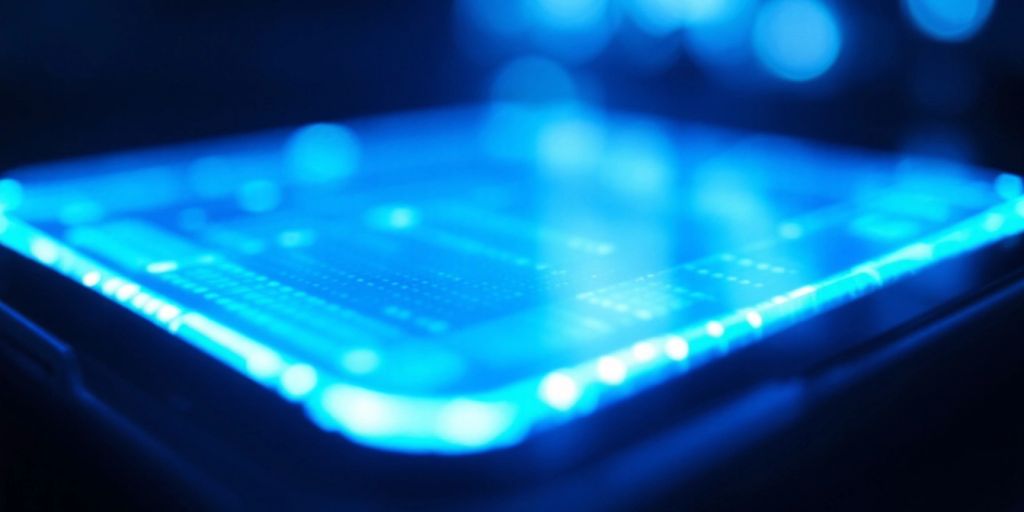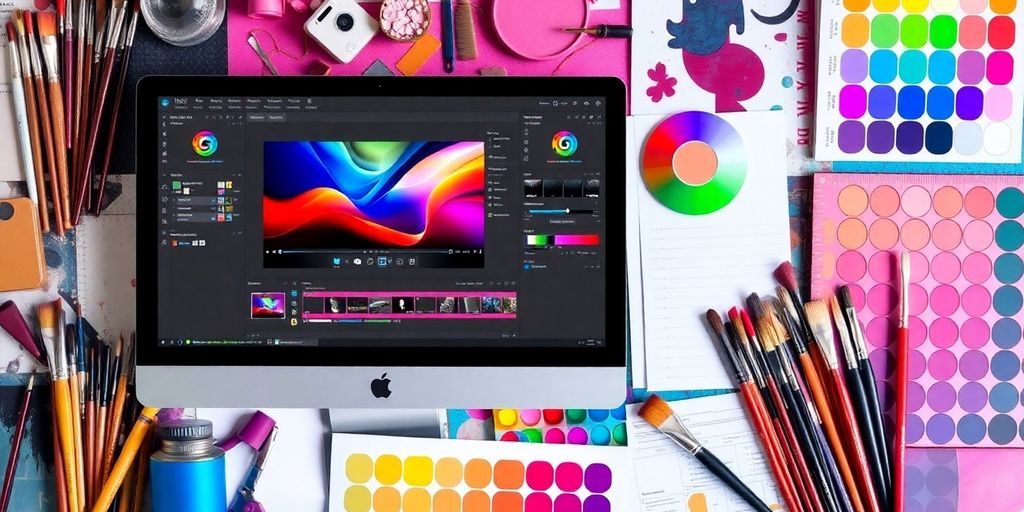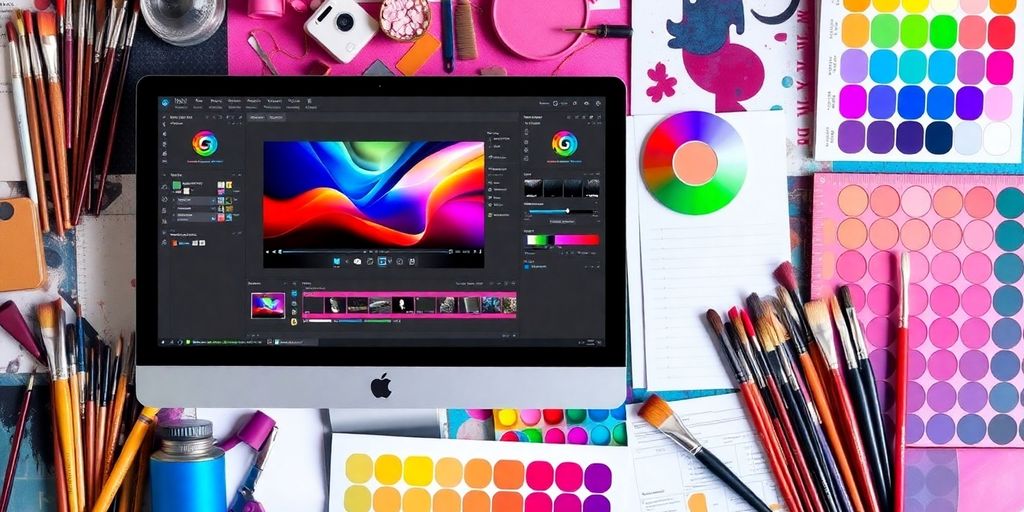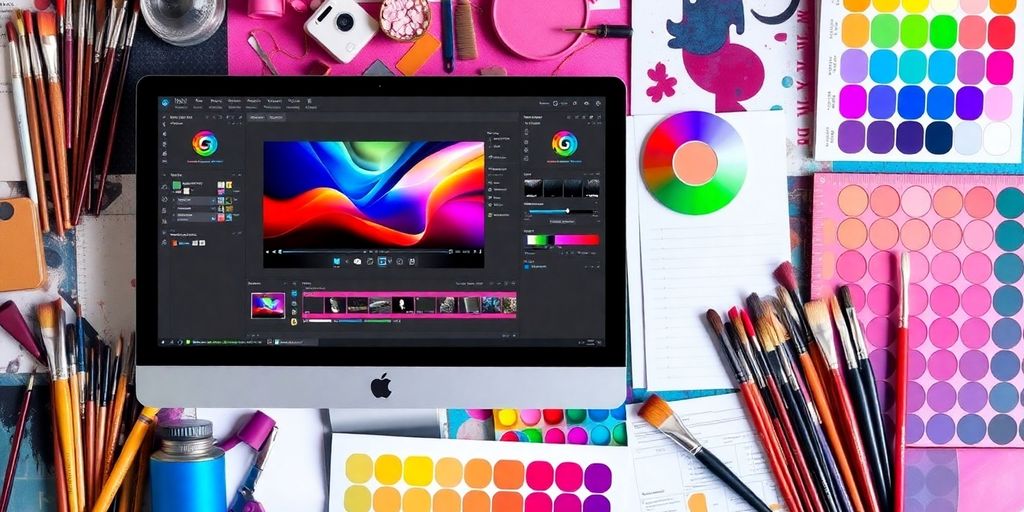Understanding What’s Blue Light, and How Does It Affect Our Eyes?

In today’s digital world, blue light is everywhere—from the sun to our screens. But what is blue light really, and how does it affect our eyes? As we spend more time looking at devices, understanding blue light is essential for our eye health and overall well-being. This article will explore the science behind blue light, its effects on our eyes, and how we can protect ourselves from potential harm.
Key Takeaways
- Blue light is part of the visible light spectrum and has shorter wavelengths than other colors.
- Sources of blue light include sunlight, LED lights, and digital screens.
- Excessive blue light exposure can lead to digital eye strain and discomfort.
- Blue light affects our sleep patterns by influencing melatonin production.
- Protective measures like screen filters and healthy screen habits can help reduce blue light exposure.
The Science Behind Blue Light

Understanding Light Spectrum
Light is made up of waves that travel in different lengths. The visible light spectrum, which we can see, ranges from about 380 nanometers (violet) to 700 nanometers (red). Blue light falls within the shorter wavelengths, specifically between 380 and 500 nanometers. This means it has more energy than longer wavelengths like red light.
Sources of Blue Light
We encounter blue light from various sources:
- Natural sunlight: The sun is the primary source of blue light.
- Artificial lighting: LED bulbs and fluorescent lights emit significant amounts of blue light.
- Digital devices: Screens from computers, smartphones, and televisions also produce blue light.
Blue Light in Digital Devices
With the rise of technology, our exposure to blue light has increased dramatically. Many people spend hours in front of screens, which can lead to discomfort. While some studies suggest that blue light may not directly damage our eyes, it can contribute to symptoms of eye strain. According to experts, blue light will not damage your eyes, but it can cause temporary discomfort and fatigue.
Blue light is everywhere, and while it can be harmful in excess, it is also essential for regulating our sleep and wake cycles.
In summary, understanding blue light helps us recognize its sources and effects on our eyes, allowing us to take necessary precautions to protect our vision.
How Blue Light Affects the Eyes
Impact on Eye Health
Blue light can have various effects on our eyes. Excessive exposure to blue light may lead to discomfort and strain. Here are some common issues:
- Headaches
- Burning sensation in the eyes
- Reduced visual comfort
Blue Light and Sleep Disruption
Blue light affects our sleep patterns. When we are exposed to blue light, especially at night, it can:
- Inhibit melatonin production
- Keep us awake longer
- Disrupt our natural sleep cycle
Blue light can keep us alert, but it can also make it hard to sleep when we need to rest.
Potential Long-term Effects
While research is ongoing, some studies suggest that prolonged exposure to blue light might:
- Cause damage to retinal cells
- Lead to potential vision problems in the future
- Increase the risk of digital eye strain
In summary, while blue light is everywhere, especially from digital devices, it’s important to be aware of its effects on our eyes and take steps to protect our vision.
Protective Measures Against Blue Light
Using Screen Filters
To help reduce blue light exposure, consider using screen filters. These filters can be applied to your devices to block a significant amount of blue light. They are especially useful when working at night or in low-light conditions. You can also adjust your device settings to enable a night mode, which changes the screen to warmer tones.
Importance of Regular Eye Exams
Regular eye exams are crucial for maintaining eye health. During these exams, your eye doctor can check for any signs of strain or damage caused by blue light. They can also recommend specific protective measures tailored to your needs. Don’t skip your check-ups!
Adopting Healthy Screen Habits
Here are some healthy habits to adopt when using screens:
- Practice the 20/20/20 rule: Every 20 minutes, look at something 20 feet away for 20 seconds.
- Keep your eyes moist: Use artificial tears or a humidifier to prevent dryness.
- Use the right prescription glasses: Ensure your glasses are suitable for the distance between your eyes and the screen.
Staying aware of your screen time and taking breaks can significantly help in reducing eye strain and discomfort.
By implementing these protective measures, you can help safeguard your eyes from the potential effects of blue light exposure. This guide will show you how to use built-in windows settings and other methods to filter blue light and protect your eyes.
Blue Light and Digital Eye Strain

Symptoms of Digital Eye Strain
Many people experience discomfort after long hours in front of screens. Common symptoms include:
- Dry eyes
- Blurred vision
- Headaches
- Tired or sore eyes
- Neck and shoulder pain
Role of Blue Light in Eye Strain
Blue light can contribute to digital eye strain. It scatters more easily than other colors, making it harder for our eyes to focus. This can lead to a feeling of visual discomfort. Additionally, when we stare at screens, we tend to blink less, which can cause dryness and irritation.
Managing Eye Strain
To help reduce eye strain caused by blue light, consider these tips:
- Take regular breaks using the 20-20-20 rule: every 20 minutes, look at something 20 feet away for 20 seconds.
- Adjust your screen brightness to match the lighting in your room.
- Use blue light filters on your devices or wear blue light glasses.
Regular eye exams are important to monitor your eye health and address any issues early on.
In summary, while blue light is a part of our daily lives, understanding its effects can help us manage our eye health better. Digital eye strain is a common issue, and taking steps to protect our eyes is essential.
The Role of Blue Light in Circadian Rhythms
Understanding Circadian Rhythms
Circadian rhythms are our body’s natural clock that helps regulate sleep and wake cycles. Blue light plays a crucial role in this process. When blue light hits our eyes, it sends signals to our brain that help us stay awake and alert during the day.
Blue Light’s Influence on Sleep Patterns
At night, when blue light exposure decreases, our body starts to produce melatonin, the hormone that makes us feel sleepy. This is important because too much blue light at night can confuse our internal clock, making it harder to fall asleep. Here are some key points about blue light and sleep:
- Blue light exposure during the evening can delay melatonin production.
- Reducing screen time before bed can improve sleep quality.
- Natural light exposure during the day helps maintain a healthy circadian rhythm.
Balancing Exposure to Blue Light
To keep our circadian rhythms in check, it’s essential to balance our exposure to blue light. Here are some tips:
- Limit screen time at least two hours before bedtime.
- Use blue light filters on devices in the evening.
- Spend time outdoors during the day to get natural light.
Managing blue light exposure is vital for maintaining a healthy sleep cycle and overall well-being.
In summary, understanding how blue light affects our circadian rhythms can help us make better choices for our eye health and sleep quality. By being mindful of our blue light exposure, we can support our body’s natural rhythms and improve our overall health.
Technological Advances in Blue Light Protection
Innovations in Eyewear
Recent advancements in eyewear have led to the development of specialized lenses that filter out harmful blue light. These lenses are designed to reduce eye strain and improve visual comfort. Some notable innovations include:
- ZEISS BlueGuard lenses: These lenses absorb blue light wavelengths between 380 to 455 nanometers, helping to alleviate visual discomfort.
- Blue light blocking glasses: Many brands now offer glasses specifically designed for screen use, providing an extra layer of protection against blue light exposure.
- Photochromic lenses: These lenses adjust their tint based on light exposure, offering protection from both blue light and UV rays.
Software Solutions for Blue Light Reduction
In addition to eyewear, software solutions have emerged to help reduce blue light exposure from digital devices. These include:
- Night mode settings: Most smartphones and computers now come with a night mode feature that reduces blue light emission during evening hours.
- Blue light filtering apps: Various applications can be installed on devices to adjust screen color temperature and minimize blue light exposure.
- Screen protectors: Some screen protectors are designed to filter out blue light, providing an additional layer of defense for your eyes.
Future Trends in Blue Light Research
As awareness of blue light’s effects grows, research continues to evolve. Some future trends include:
- Enhanced filtering technologies: Ongoing research aims to develop more effective blue light filtering technologies for both lenses and screens.
- Personalized eye care solutions: Advances in technology may lead to customized eyewear solutions based on individual eye health needs.
- Collaboration with healthcare professionals: Companies like Eyesafe are working with doctors to create standardized measures for blue light filtration, ensuring better protection for users.
The scale was developed by Eyesafe with input from doctors and healthcare leaders to offer a clear, standardized measure of blue light filtration to enhance eye protection.
By staying informed about these technological advances, individuals can take proactive steps to protect their eyes from the potential effects of blue light exposure.
Conclusion
In summary, blue light is everywhere around us, from the sun to our screens. While it plays a role in keeping us alert and helping our vision, too much exposure, especially from devices, can lead to eye strain and discomfort. As we spend more time in front of screens, it’s important to be mindful of our blue light exposure. Taking breaks, using screen filters, and adjusting our device settings can help protect our eyes. Understanding blue light is key to maintaining our eye health in this digital age.
Frequently Asked Questions
What is blue light?
Blue light is a type of visible light that has short wavelengths and high energy. It is found in sunlight and is also emitted by digital screens and LED lights.
How does blue light affect our eyes?
Too much blue light can cause discomfort, such as dry eyes and blurry vision. It may also contribute to long-term eye problems.
Can blue light disrupt sleep?
Yes, exposure to blue light, especially at night, can interfere with sleep by affecting the body’s natural sleep cycle.
What are some ways to protect my eyes from blue light?
You can use screen filters, take regular breaks from screens, and wear special glasses that block blue light.
Is blue light harmful to everyone?
While blue light can affect anyone, children may be more sensitive to its effects because their eyes absorb more blue light.
Are there benefits to blue light?
Yes, blue light helps with alertness, boosts mood, and regulates our sleep-wake cycle when exposed during the day.







Responses